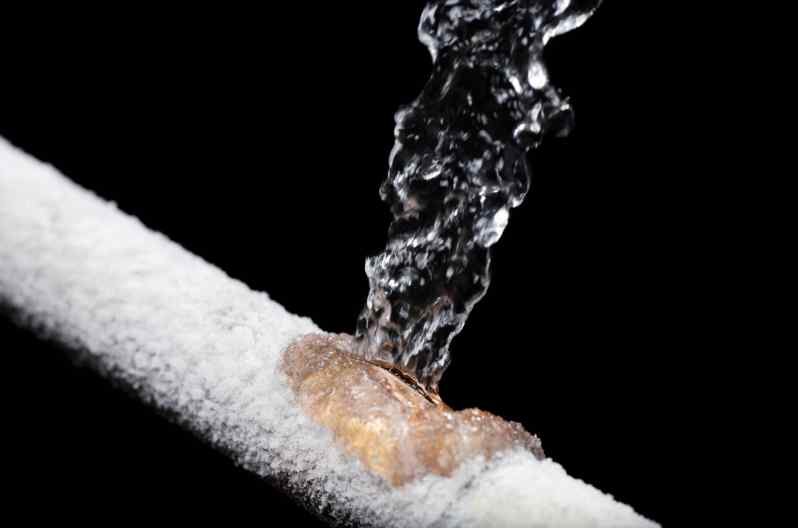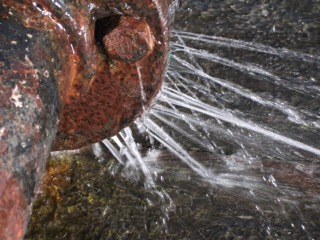Spotting and Efficiently Fixing a Broken Pipe: A Practical Guide
Spotting and Efficiently Fixing a Broken Pipe: A Practical Guide
Blog Article
Just how do you feel when it comes to How to install a dishwasher safely?

A burst pipe is a significant emergency; you can just stand as you view water you pay very much to rejoin with the earth. In even worse cases, you discover a swimming pool on your kitchen floor, which is a wonderful trip danger, especially if you have kids around. If the pipeline that burst was in your wall surfaces, trouble: you may need to paint that whole section.
Just how can a catastrophe like a burst pipe be stopped and taken care of? Well, by listening to your professional emergency plumbers as well as following these policies.
Just how do I recognize when my pipelines have ruptured?
Fluctuating water pressures
Pipes do not just burst in a day. You may have observed that your kitchen tap or shower doesn't run promptly when you transform the tap. It might stop for a couple of secs and afterwards blast you with even more force than typical.
In other instances, the water may seem normal at first, then drop in stress after a few seconds.
Contaminated water
Many people think a ruptured pipeline is a one-way outlet. Quite the contrary. As water spurts of the hole or wound in your plumbing system, pollutants find their way in.
Your water might be infected from the resource, so if you can, inspect if your water storage tank has any type of problems. However, if your alcohol consumption water is supplied and detoxified by the local government, you must call your plumber promptly if you see or scent anything funny in your water.
Puddles under pipes and sinks
When a pipeline ruptureds, the discharge creates a puddle. It might show up that the pool is expanding in size, as well as regardless of the amount of times you wipe the puddle, in a few mins, there's one more one waiting to be cleaned. Often, you might not be able to trace the pool to any type of noticeable pipes. This is an indication to call a professional plumber.
Damp walls and also water stains
Prior to a pipe bursts, it will leakage, many times. If this persistent dripping goes unnoticed, the leakage may finish right into a wide gouge in your pipe. One very easy method to prevent this emergency is to watch out for wet walls ad water discolorations. These water discolorations will lead you right to the leakage.
Untraceable trickling noises
Pipeline bursts can happen in one of the most undesirable places, like within concrete, inside walls, or under sinks. When the house goes quiet, you might have the ability to hear an irritatingly relentless trickling noise. Also after you've inspected your shower head and kitchen area tap, the leaking might continue.
Beloved reader, the trickling may be coming from a pipeline inside your walls. There isn't much you can do concerning that, except inform an expert plumber.
Show up the Heat
Establish fans to blow warm right into cold spaces. Maintain the garage door closed. If you have actually reduced water circulation, warmth the most susceptible pipelines (usually in cellars and also crawl spaces or near outside walls) with a hair dryer. Leave the faucet on while you apply heat. As you melt ice, the circulation will certainly enhance. To avoid pipelines from cold, insulate your walls.
Beginning Getting Rid of the Water
Get hold of the wipe, buckets and a store vacuum to start to do away with the water due to the fact that you definitely do not desire it saturating right into everything else in your home. And also, a quick clean up will certainly minimize the opportunities of something getting moldy.
What do I do when I find a burst pipeline?
Your water meter will certainly remain to run even while your water wastes. To reduce your losses, discover the primary controls as well as transform the supply off. The water pipe are an above-ground framework beside your home.
How to Fix & Detect a Leaking Pipe
How Do I Know if a Pipe is Leaking?
Leak detection tests can help you determine if your pipe has a leak. Even if you don’t see an apparent leak, you should still conduct leak detection tests regularly to save water and money—and prevent major damage to your home.
Water meter. It can be helpful to figure out what your usual water meter usage numbers are and then monitor them regularly. To monitor your meter, first, turn off all water faucets in your home. Check the meter and write down the numbers. In a few hours, check the meter again. If the numbers have changed, you have a leak. Water gauge. Use a water gauge to test your water pressure. Your showerhead should produce a certain amount of water pressure based on its model and design. If the pressure is lower than it is supposed to be for that specific showerhead, your home likely has a leak. Puddles. Look inside your bathroom, laundry, and kitchen sink cabinets. Puddles around the cabinets or around toilets, tubs, showers, and washing machines indicate the presence of a leaking pipe. You may also notice loose tiles, peeling or flaking paint, or mold caused by water accumulation. Napkin test. Even if you don’t see any puddles, you may still have a leak. You can test for water leaks in the bathroom, laundry, and kitchen by wiping below-sink connections with a napkin, paper towel, or piece of toilet paper. If it becomes damp, you probably have a leaking pipe under the sink. Discolored walls. Walls that are discolored—usually with brown or yellow stains—or bulging might mean that they have been impacted by water damage caused by a leaking pipe. Smell. A leaky pipe will create sitting water, and over time, that water may develop a musty smell. If your home smells musty, but you can’t locate the source, it may be due to a leak. Steps for Fixing a Leaking Pipe
A leaky drain can be remedied by tightening the pipe base, replacing the drain seal, caulking the rim, and tightening the pipe nut. Similarly, a leaking toilet pipe can be treated by tightening the packing nut. You may also need to replace the valve. A leaky faucet may just need tightening or replacement of the washers. If that doesn’t work, consider replacing your faucet. If your pipe has a hole in it, you may want to use a pipe leak sealer or pipe leak tape. This quick fix for water pipe leaks can also temporarily fix a copper pipe leak. https://www.ahs.com/home-matters/quick-tips/how-to-tell-if-pipes-are-leaking/

As a fervent reader on How to Install and Connect a New Dishwasher, I thought sharing that piece of content was really useful. Are you aware of another person who is intrigued by the niche? Be sure promote it. Many thanks for taking the time to read it.
Secure top-grade service. Report this page